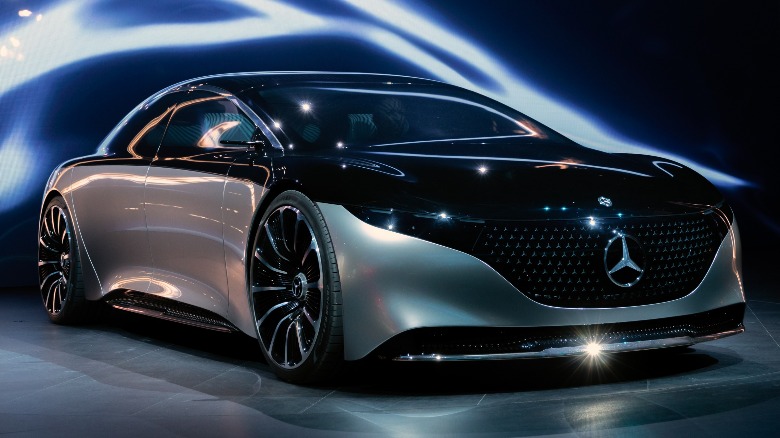Modern cars are a result of decades of industrial development enhanced by the advanced technology of the computer age. Analog vehicles are a thing of the past, with carburetors, points, and even manual window cranks the domain of the classic car show. It makes no difference if the car is a lowly entry-level hatchback or the fanciest luxury land barge — computers control everything.
It is not just engine management that requires silicon for high efficiency and low emissions: windows, wipers, and seat heaters all operate through electronic control units. Technology is everywhere, and more creeps into vehicles each year, bringing touch screens, refrigerators, and even surveillance cameras into the driving experience. But even with the ubiquitous presence of electronic controllers in all our vehicles, some automakers present the technology or utilize it better than others. Here are ten that do it best.
Always at the leading edge of luxury, Mercedes-Benz is also a leader in technology. With developments in everything from safety and comfort to performance and speed, MB is an aggressive, bold, and inventive manufacturer. As an innovator in the industry, MB has introduced many firsts for production vehicles, including fuel injection in the 1955 300SL gullwing, crumple zones in the 1959 220, and seat belt pretensioners in the 1981 S-Class.
Today, MB is at the forefront of emerging electric propulsion technology. With the introduction of the all-electric EQS for the 2022 model year, MB is leaving its mark and upholding its legacy as a leader in automotive tech. While this car is not set to take the world by storm with a dazzling array of futuristic space-age gizmos and gadgets, it will set MB comfortably atop the pile as the leader in luxury and tech. And that’s not to say it doesn’t deliver some cutting-edge technology. The dashboard consists primarily of a 56-inch Hyperscreen running from end-to-end with screens dedicated to the driver, passenger, and central controls for everything else. It rides on an innovative air suspension with each corner computer-controlled to react to road conditions, and boasts plenty of electric power with a range of up to 350 miles. Simply put, Mercedes does not rest on its laurels.
Led by arguably the world’s most eccentric billionaire CEO, Tesla nears the top of any list involving cars and tech. Being the first to make an electric car viable for the masses is but one of the many impressive achievements that place Tesla firmly at the leading edge of auto technology. The manufacturer’s single most defining quality as an automaker is its ability to integrate novel tech and put it into production. Many of today’s commonplace automotive features started as what was once seen as crazy Tesla innovations.
One of the best-known of these features that has become ubiquitous today is the large touch screen found in most new cars. These screens have been a staple of the Tesla driving experience since the launch of the Model S in 2012. Tesla also pioneered autonomous driving, auto-hiding door handles, and seamless integration with mobile devices into the operation of the car.
While many comfort features and driving aids from Tesla have found their way into all manner of cars from multiple manufacturers, much of the groundbreaking engineering is deep below the surface. Tesla became the first company to offer a vehicle that provided a useful electric driving range to rival gas-burning vehicles thanks to innovative battery management and efficient motors. Combine this with the clever use of cameras for safety and security as well as “black box”-type functions in the event of a crash, and you have a car packed full of tech that delivers a good ownership experience and a great drive.
Porsche’s flagship 911 model is produced today with the same basic design and shape as when it was introduced nearly 60 years ago, yet continues to be one of the most exciting machines on the road. In the free market capitalist system in which we exist, no company can produce the same product year after year and expect to stay in business. Yet Porsche has shown that as long as an automaker keeps up with the times and injects modern innovation into a proven platform, it can remain relevant.
For Porsche, retaining the shape and layout of the 911 is paramount, and it appears that as long as there is a Porsche, there will be a 911. And as long as there is a 911, it will be a rear-engine 4 seat fastback. And yet, in order to keep up with the times, Porsche has made many changes along the way, like adding water cooling to their cars in the late ’90s. Although many special models can still be had with a traditional manual transmission, dual-clutch transmissions became standard shortly after, and today’s cars now feature screens for info display and controls for climate and entertainment.



